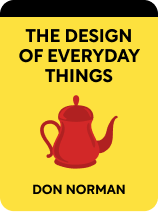

This article is an excerpt from the Shortform book guide to "The Design of Everyday Things" by Don Norman. Shortform has the world's best summaries and analyses of books you should be reading.
Like this article? Sign up for a free trial here .
What do good designs look like? How can you tell if something has a good or a bad design?
You may think that good designs vs bad designs are obvious. But there are several elements that make good designs stand out, and can offer insight on how design works.
Keep reading to find out more about good designs.
What Do “Good Designs” Look Like?
At its core, design is any human influence on the physical world. We tend to think of this in terms of buildings, fashion, or products, but design is much broader than just a few fields. Every object or environment that has been created or modified by humans is designed. This applies to everything from ancient architectural marvels to the layout of clothes in your closet.
As technology evolves, new fields of design pop up to focus on specific problems. User interaction is important in every subfield, but it’s most often talked about in industrial, interaction, and experience good design.
- Industrial design focuses on the creation and development of physical objects, with a particular focus on function, aesthetics, and value.
- Interaction design focuses on the interface between user and object, usually in a digital context (think website design).
- Experience design focuses on the emotional experience of using a product, service, or environment.
Each of these fields focuses on redefining good design in terms of user experience. Two important principles guiding this definition are discoverability and understanding. Discoverability refers to whether a user can figure out what an object is and how to use it without considerable effort. Discoverability answers the question, “How do I use this thing?”
- For example, the style of a door handle and the location of the hinges make it easy to discern what that object is and how it works—it is easily discoverable. But a modern or industrial door with no visible hardware can be almost impossible to figure out.
Understanding, in this context, refers to the user’s ability to make meaning out of the discoverable features of the object. Understanding answers the questions, “What is this, and why do I want to use it in the first place?” On a normal door, handles and hardware indicate where to push or pull—but they also help us understand what this object is (a door) and what it’s used for (opening and closing). In other words, goods designs have to consider not only the form and function of a product, but also the experience of interacting with that product.

———End of Preview———
Like what you just read? Read the rest of the world's best book summary and analysis of Don Norman's "The Design of Everyday Things" at Shortform .
Here's what you'll find in our full The Design of Everyday Things summary :
- How psychology plays a part in the design of objects you encounter daily
- Why pushing a door that was meant to be pulled isn't your fault
- How bad design leads to more human errors






